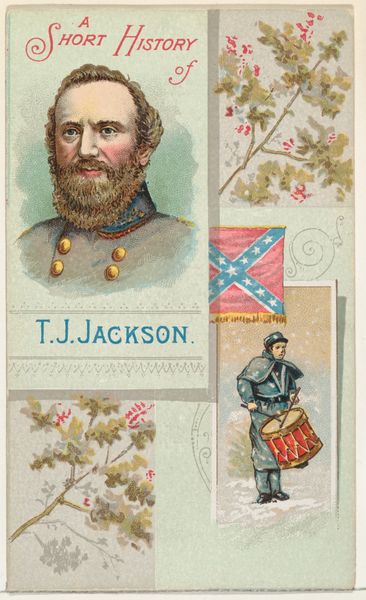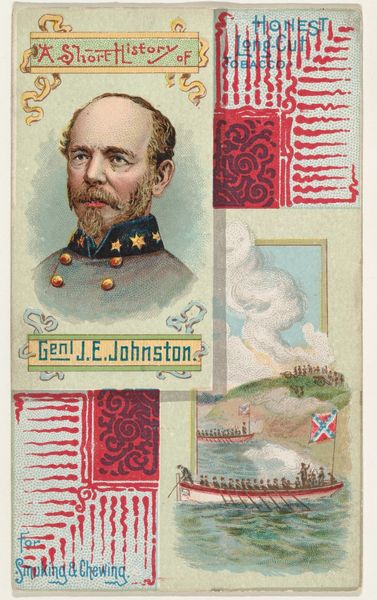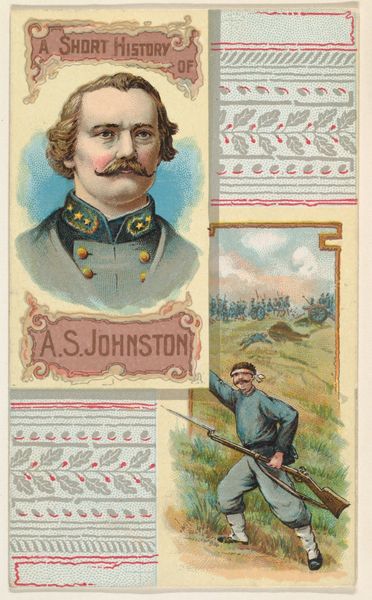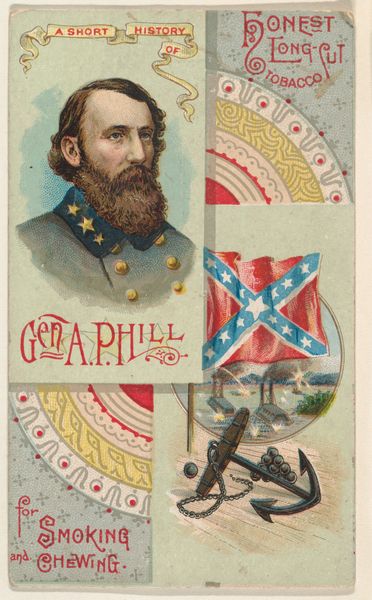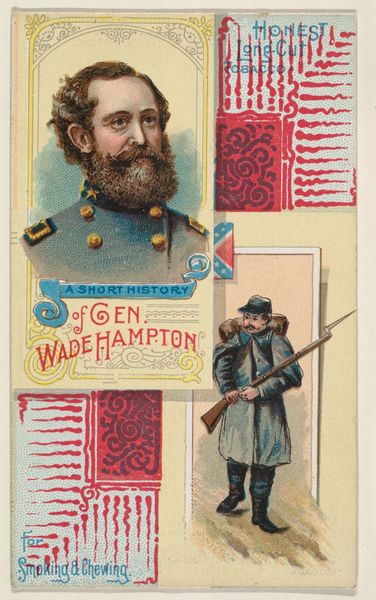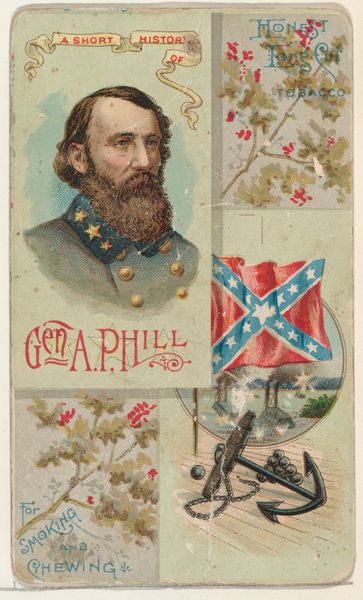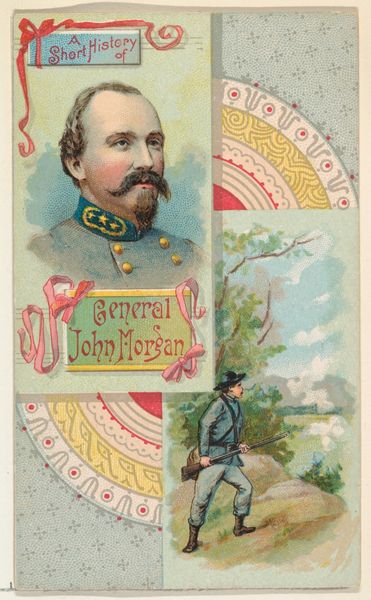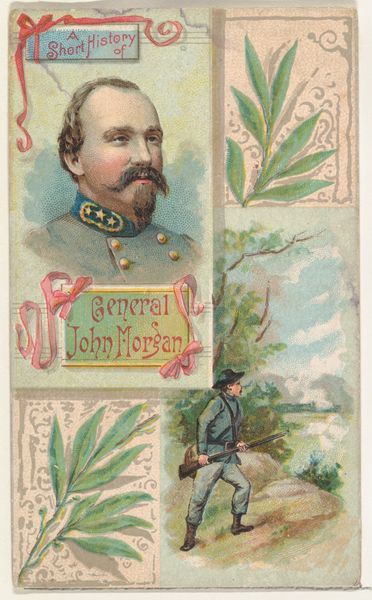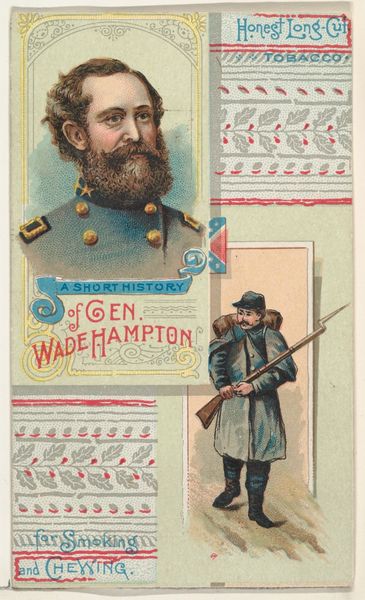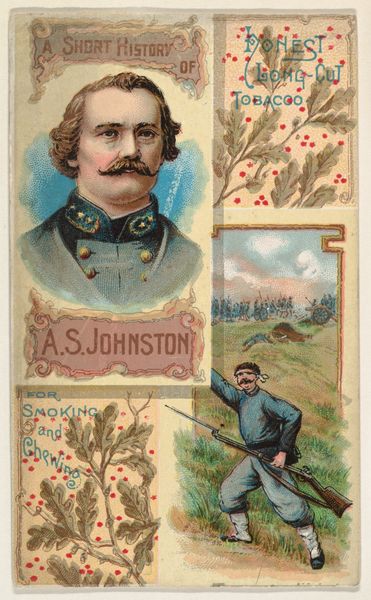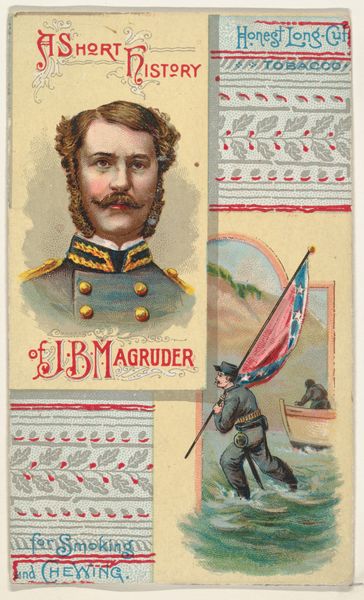
A Short History: General Thomas Jackson, from the Histories of Generals series (N114) issued by W. Duke, Sons & Co. to promote Honest Long Cut Smoking and Chewing Tobacco 1888
0:00
0:00
drawing, coloured-pencil, print
#
portrait
#
drawing
#
coloured-pencil
# print
#
coloured pencil
#
men
#
history-painting
Dimensions: Sheet: 4 3/16 × 2 1/2 in. (10.7 × 6.4 cm)
Copyright: Public Domain
Curator: Here we have a piece titled *A Short History: General Thomas Jackson*, a colored pencil drawing from 1888. It was produced by W. Duke, Sons & Co. as part of a series of cards promoting their tobacco products. Editor: It's intriguing how it tries to capture different facets of his story in such a limited space. My immediate reaction is…compartmentalized. Each little scene seems separate from the others. Curator: Precisely. As a commercial piece, the focus isn't necessarily on Jackson as a nuanced individual, but rather as a symbol. His image was being used to sell a product. Looking at this card today, we have to recognize its role in perpetuating a particular narrative around Confederate figures like Jackson. Editor: And the framing is fascinating. It positions this "history" alongside symbols – the Confederate flag, a drummer boy – which evoke specific emotions and ideas. It's marketing as memory-making, almost. What do we make of the "peace" banner with a single red berry near what appears to be written text within a broken sword hilt? Curator: Well, that peace symbol adds a complex layer, doesn't it? One could argue that the image wants to promote a sense of reconciliation after the Civil War. Yet, the inclusion of Confederate symbols creates a tension, reminding the viewer of the unfulfilled promises of equality for African Americans. That red berry feels significant in the ways it evokes both life and bloodshed. Editor: Right. The context of the Lost Cause narrative becomes critical here. These cards didn't exist in a vacuum; they were part of a broader cultural project that aimed to romanticize the Confederacy, and justify its ideology in a nation trying to move forward, though one which still was structured by race. Curator: Indeed. And it also emphasizes the ways that visual culture functions within systems of power. A tobacco company is participating in shaping the historical narrative in a bid to sell a product. Editor: And the portrait, centered in the image, works as a kind of endorsement. That face becomes associated with the advertised product. Curator: It’s important to remember the piece's original context—tobacco advertising—because that framing offers us insight into the ongoing process of myth-making. I’m left wondering, what other ways did consumer culture influence broader cultural memory? Editor: A disquieting intersection of commerce, remembrance, and power…definitely a piece that reveals uncomfortable truths and raises urgent questions.
Comments
No comments
Be the first to comment and join the conversation on the ultimate creative platform.
